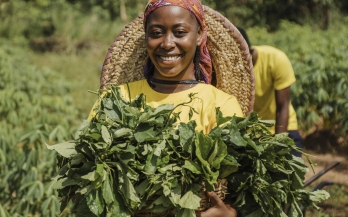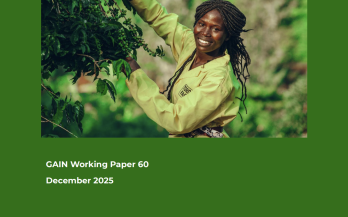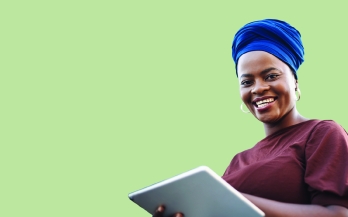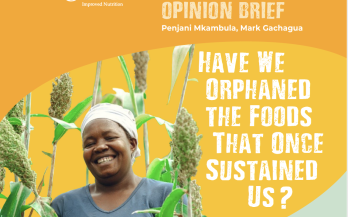- 22/12/2025
Nigeria’s food systems are critical for national development, yet women face
deep-seated gender inequalities that restrict their participation, productivity, and access to resources, significantly hindering overall food security.
Achieving a resilient and equitable food system requires moving beyond genderneutral rhetoric towards intentional policy shifts, fostering inclusive governance, and investing in gender equity across the entire food system.
Prioritise equitable access to productive resources, strengthen women’s leadership in decision-making, enhance gender-disaggregated data systems, and champion community-led social norm change to build a sustainable food system where no one is left behind.
Latest Review Series reveals USD 11 Trillion Bill in Food System’s Hidden Costs, a Significant Underestimation
• A partial USD 11 trillion bill: According to FAO’s latest estimates, food systems cost the world over USD 11 trillion per year in hidden health, socioeconomic, and environmental burdens – an amount larger than the GDP of most major economies. However, this figure likely represents a substantial underestimation of true costs and benefits as it does not capture all relevant negative and positive impacts.
• Health costs are the largest contributor, but micronutrient malnutrition remains invisible: Diet-related diseases, premature mortality, and productivity losses from illness are the biggest drivers of these costs, yet we are still failing to measure the true price of micronutrient malnutrition.
• The equity crisis: Existing research and data are heavily skewed toward high-income countries, leaving the severe burdens in low- and middle-income nations largely hidden.
- 15/12/2025
Global food systems generate significant socio-economic impacts (or externalities) – both positive and negative – which greatly vary across geographic regions, supply chains, and production systems. These externalities, ranging from inadequate working conditions and child labour (negative) to job creation and community development (positive), are rarely reflected in market prices. True Cost Accounting (TCA) methodologies aim to advance
traditional impact assessments by quantifying and economically valuing food systems' external benefits and costs – encompassing health, environmental, and socio-economic dimensions.
However, consensus on measurement methods and metrics is lacking. We reviewed existing frameworks, approaches, methods, and data sources used for evaluating and monetising socio-economic externalities associated with food production and consumption. Our analysis of 24 publications (2008–2025) revealed a nascent field
with limited evidence, characterised by a strong focus on negative impacts, individual foods or food groups (as opposed to whole diets), and primary production.
Billions of people worldwide are malnourished. Despite our best efforts, the cost of a healthy diet and food insecurity continue heading in the wrong direction. Without significant intervention, this crisis will persist—but we believe artificial intelligence (AI) represents a powerful new tool to help change that trajectory.
- 04/12/2025
Orphaned crops refer to a diverse group of foods, including cereals, legumes, vegetables, and fruits, that have been largely overlooked by mainstream agricultural research, breeding programs, and markets.
Many orphan crops contain higher concentrations of vitamins, minerals, and protein than major cereals. In soci eties facing a double burden of undernutrition and rising diet-related diseases, orphaned crops provide a crucial bridge. They nourish without harming.
Nutrition education in schools and public health programs can normalize the consumption of traditional foods, while media and culinary initiatives can make them fashionable. Changing perception is just as critical as changing production.
Jakarta moves fast. So do its appetites. Over the past five years, Indonesia’s food landscape has shifted further towards convenience and high-risk options, moving away from diets that are nourishing and environmentally grounded. Indonesia Health Survey 2023 tells the story in numbers: high-fat foods consumption rose from 58.5% in 2018 to 60.7% in 2023; salty foods jumped from 40.3% to 52.2%; and instant noodles climbed from 45% to 51.7%. Meanwhile, adequate vegetable intake (five portions per day) fell from 4.6% to 3.3%.
- 28/11/2025
Global food systems face complex, multi-faceted challenges that greatly vary by context, and their environmental, health, and socio-economic impacts are equally diverse. A comprehensive understanding that integrates these disparate factors into unified, clear guidance is essential for decision-making, including policy measures and industry practices. True Cost Accounting (TCA) methodologies aim to meet this need by quantifying a wide spectrum of food systems-related benefits and costs in economic terms. We reviewed existing TCA frameworks, approaches, methods, and data sources used for measuring and monetising environmental externalities generated by food production and consumption. Our analysis of 85 recent publications (2018–2025) revealed several key patterns in current research. The literature shows a predominant focus on negative impacts, with greenhouse gas (GHG) emissions receiving primary attention. Studies mainly examined cereals, meat, and dairy, mostly in high-income and upper-middle-income country settings. TCA assessments employed three main methodological approaches: granular bottom-up, large-scale top-down, or comparative approaches, to capture environmental externalities.
Our results revealed a rapidly growing research area, characterised by a large variety of methods and data sources, while highlighting persistent technical challenges. The field faces several critical gaps, many of which reflect underlying methodological limitations in environmental impact assessments more broadly: little-to-no attention to lower-income countries; a predominant focus on high-value, commercially traded (often export-oriented) commodities; and limited consideration of systems dynamics and interconnections (e.g., product co-dependencies) in models. Addressing these challenges, combined with improved data availability, quality, and disaggregation, will be key for maximising TCA’s potential as an evidence-based policy and advocacy tool.
- 21/11/2025
This White Paper makes the case for a territorial governance approach that reinforces urban–rural linkages by empowering local actors and enabling their collective agency. Local, traditional, and farmers markets serve as strategic hubs that offer multiple levers and diverse forms of capital for transforming food systems within cities, across urban–rural interfaces, and throughout wider territorial landscapes. Investing in both hard (physical) and soft (capacity-building) market infrastructure, supporting diverse knowledge systems, and advancing inclusive “whole-of-society” governance are essential steps toward unlocking resilient and sustainable food systems now and in the future. With these foundations in place, communities, governments, and sectors can routinely apply best practices and participate meaningfully in decision-making processes that foster a wide range of regenerative, biodiverse food value chains. Such systems create market and food environments characterized by vibrant public spaces; access to affordable, safe, culturally preferred, healthy diets; reduced and valorized food waste; and opportunities for dignified, prosperous livelihoods.









